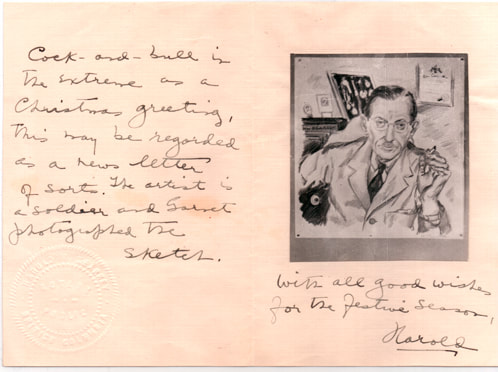 So Saturday arrives and I am to give a talk in the afternoon. Heather the museum curator mentions that this is a new thing for them since most of their talks are about dead people. Also she was hoping that members of city council might attend but they are all away in Halifax for a conference. As both artist and curator I am quite familiar with fluctuating numbers for openings and talks -- veering between 75 and zero, so I have no idea what to expect, but as we drive up we are greeted by music, balloons and banners in the park adjacent to the museum. Alas it's not for me; it's the PRIDE festival taking place across the way. My event, while prominently advertised in the street signage out front, turns out to be a small party bolstered by Heather, my family members, some museum researchers, a couple interested in the solar printing process in particular, the Doctor Kearney Middle School principal Wes, and Matt from the Alaska Highway News. Intimate. That said, everyone there seemed keenly engaged in the subject and offered much in terms of feedback, more info on the Doc and the region in general. I do a PowerPoint talk showing some of the original photographs and explain how I create the prints. There is a lot of interest is a drawing that an American soldier did of my father, since Tamara, a museum research volunteer, is looking for material on William Barnett, an artist who was there on the Alaska Highway project in the 1940s. We email my sister and yes Bill Barnett was a friend of my mother's at the time so he likely did the drawing. 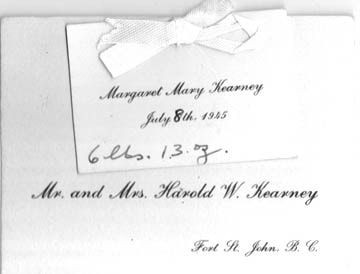 Tamara retrieves a book from the archives that lists all of the babies delivered by Garnet during his career there. Katie finds my name, and we note that the date is a day earlier than the one on my birth certificate. In my album there is a birth announcement card that has the same date as the book, but it has been inked out and corrected. Back in Toronto I ask my sister about this and she suggests that my father had a particular printer in Sarnia so maybe the three hour time difference is the reason. If I was born around midnight and the telegram to Ontario came somewhere then ?? There isn't any way to find this out. Which brings me to another subject, that of memory. I have been listening to Malcolm Gladwell's excellent podcast Revisionist History, (thank you Anna) and the one I heard today is Free Brian Williams. It concerns memory, and a study that examines the way we all remember significant events and how these memories drift over time, varying often dramatically from person to person and gaining embellishment as they are retold. I am sure that my Fort St. John adventure will work its way into various pockets of my brain and will not always be remembered as clearly as it supposedly is now. Maybe I will conflate the PRIDE festival with my talk, or suggest that we went horseback riding at Wes's ranch. So that's why I write this.
1 Comment
Road TripA fabulous surprise, well, near-surprise, was the arrival on Friday of daughter Katie who flew up from Vancouver for the weekend. Now a threesome, we headed off to Hudson's Hope and the W.A.C. Bennett Dam. 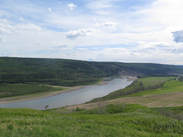 Uncle Garnet took me there by bus back in 1964 when it was under construction--I recall seeing the ant-like trucks way below as they hauled dirt into what became an enormous earth dam. This time we were bused 500 feet underground to view the turbines and get a sense of the history and magnitude of the project. We are given information on how turbines work as well as an overview of the BC power grid and the immensity of impact this dam and its companion the Peace River dam has. Also some of the geological history in the area and the fact that dinosaurs were once there. There is a brief mention of the displacement of mostly Aboriginal people when the giant lake was created. The current public issue is the latest dam project, Site C, a hot button topic that seems to out shine the pipeline controversies swirling throughout the province. http://www.dawsoncreekmirror.ca/regional-news/site-c/bc-hydro-acknowledges-w-a-c-bennett-dam-s-dark-side-1.2275956 https://en.wikipedia.org/wiki/W._A._C._Bennett_Dam The excursion was a good break from installation work and the artist talk tomorrow afternoon.
Fort St. John May 29
We arrive around 9 pm. It’s light. Awake 5 ish perhaps 4:30. It’s light out. Basically I did not see the city after dark. We are far enough north for this. I am here along with my trusty assistant (husband Richard) to mount an exhibition of solar prints at the museum about my uncle Dr. Kearney. He was a beloved doc, the second one in the area and famous for his many acts of generosity plus performing an operation remotely by radio (the man survived) and modifying his Model T into the town’s first ambulance. He delivered me, along with most of those born between 1935 and 1960. So while the trip is an art/heritage project it’s also a chance for me to revisit this place. My parents returned to Ontario while I was still a baby and I visited here once when I was 18, getting to know my uncle a little. In those days it was CNR to Edmonton, Northern Alberta Railway to Dawson Creek and a bus to FSJ. Nowadays there’s a bustling airport with regular flights to Calgary and Vancouver. I was hoping to run across a few people with memories/relatives/connections that I could chronicle but I am probably a decade or so too late. The exhibit takes several days to install in this museum setting, surrounded by artifacts that chronicle North Peace history. My work tells about my uncle through my art practice, making solar prints of early family photos on family linens. My first view of the museum confirms to me that this is the ideal setting for this body of work. The main museum building contains a series of set pieces that reproduce aspects of fsj history from teepee, through trappers cabin, doctor’s office, hospital room, school, post office, even a section that demonstrates the great WW2 Alaska Highway project. I am scratching the surface here. There’s also a reconstructed version of Ma Murray’s Alaska Highway News, miraculously still in print with excellent coverage of my installation I must say. In digression, my sister says that it was Ma Murray who stopped and told her of my birth. The museum has several buildings outside of the main one that have been moved on site. They include, among others, early police barracks, a homesteaders' house, a fur trading cabin. As I walk out after a day’s work I am struck by the first one because I have a photograph of it in my trove of family pictures with a woman posed in front of it. She is Monica Storrs, an Anglican missionary who was a family friend. She apparently built her “abbey” herself, and often housed youngsters so that they could attend school. While in my mind I am revisiting an earlier Fort St John, the modern one is a busy world where truck and workboots replace Miss Storrs' horse. The suite hotel we are staying in is mostly populated with workers who leave in the early morning after a more generous breakfast offering than hotels usually provide, and return tired and dusty at the end of the day. On the weekend there are women and children visiting Dad or picking him up. It's very quiet although there is a guy above us that wrestles with his pitbull when he gets home from work. The first time we heard it we thought that there was a brawl or at least serious renovations but it turned out to be doggy joy, only lasting for about 15 minutes before they tumble down the back stairs and out for a run. We are told that there is a park at Taylor Flats, a few miles south of FSJ, so we take a little trip down the Alaska Highway. We chat with an elderly woman at the tourist centre who tells us that Doc was her family doctor, delivering most of the family children, with one even given the middle name Kearney. "We were all so poor, and he would take anything in payment" vegetables, the proverbial chicken etc. He charged $2 a visit throughout his career but treated people whether they paid or not. to be continued .. |
Archives
February 2024
|
Margaret Rodgers | Canada
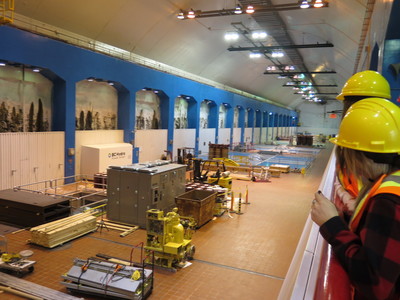
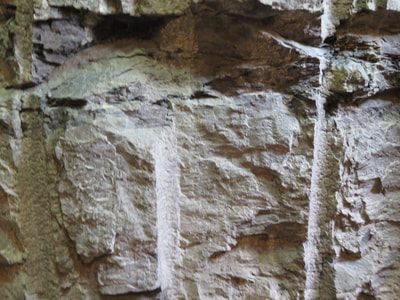


 RSS Feed
RSS Feed